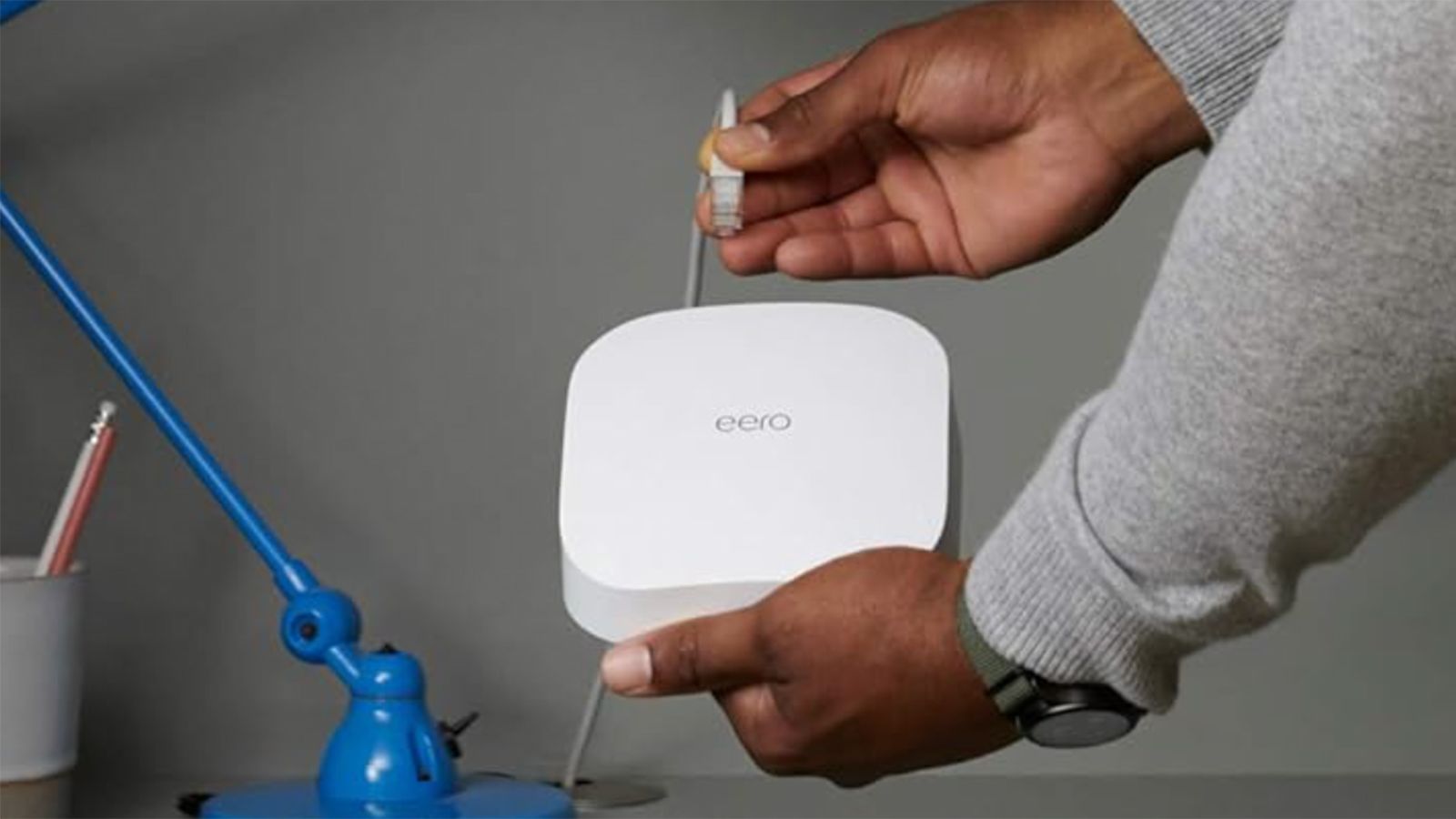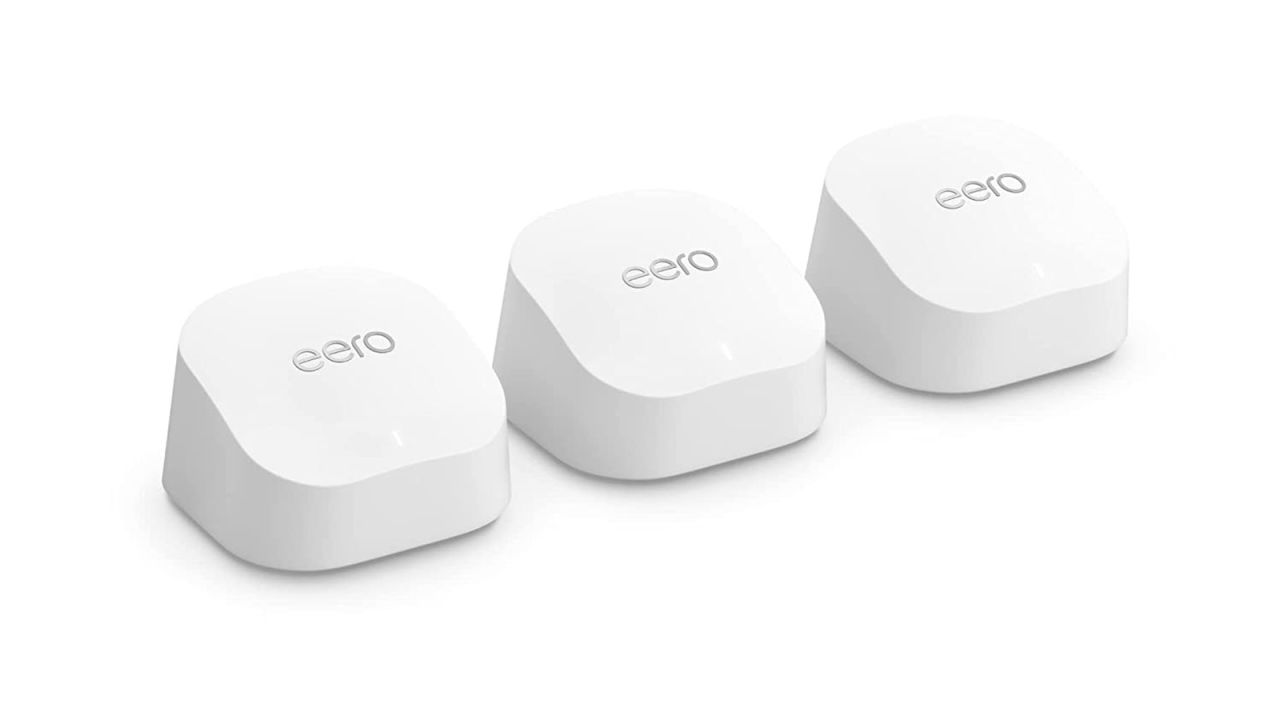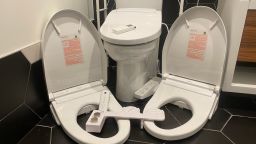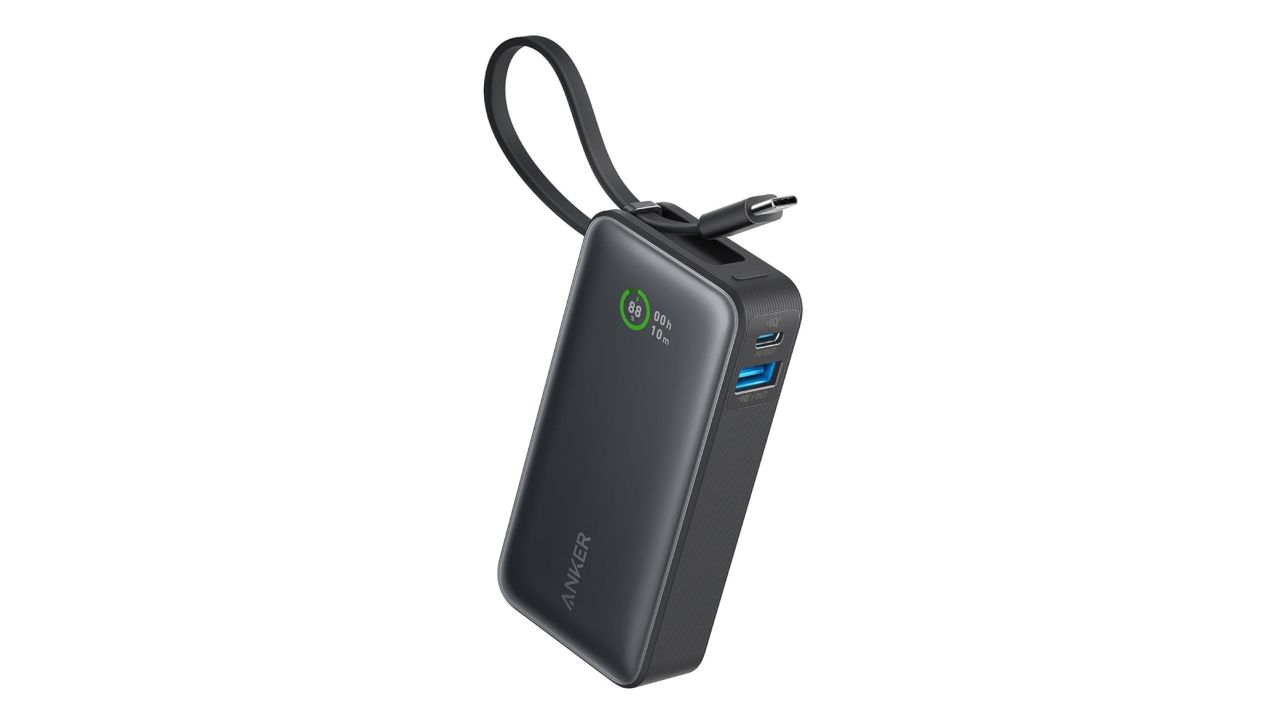With more and more devices in our homes — phones, tablets, TVs, computers, game consoles, smart appliances and more — demanding Wi-Fi bandwidth, a reliable, speedy network is more important than ever. And if your home has a challenging layout, or you live in an older building with impenetrable walls, a single router might not cut it, leaving you with poor connectivity or dropouts. The answer is a mesh system. Rather than in a single router, a mesh system uses multiple miniature units you can place throughout your home to effectively eliminate dead zones and improve wireless internet speeds.
After months of testing mesh routers to find the best of the best, we found one that rises to the top.
Best mesh Wi-Fi router: Eero 6+, 3-Pack
$300 at Amazon
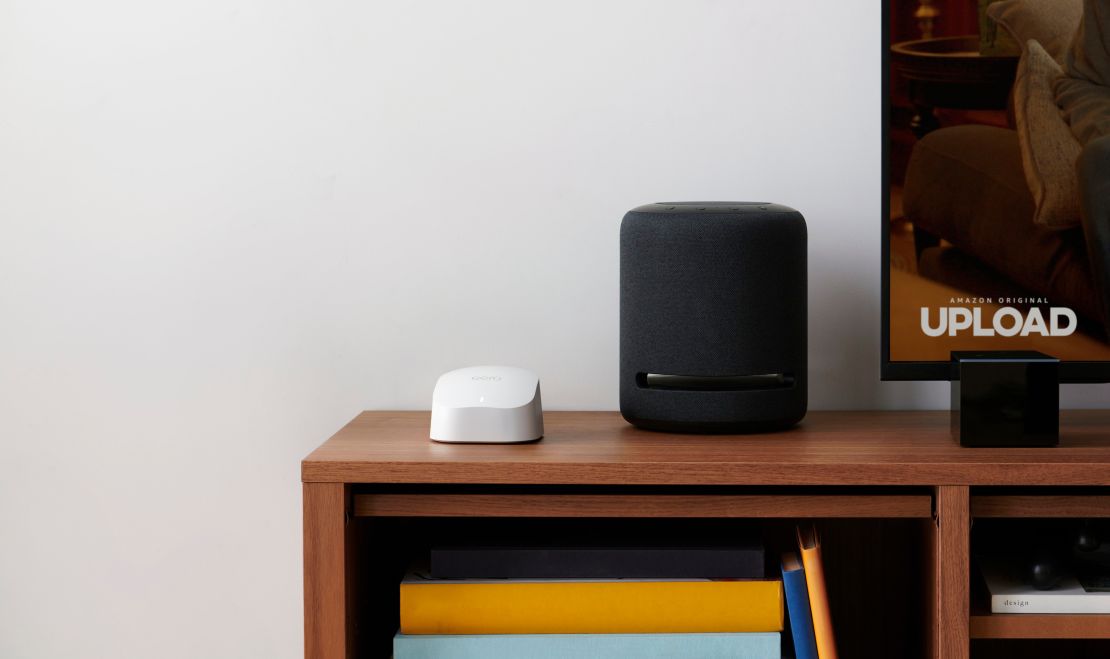
The Eero 6+ mesh Wi-Fi system is our new top pick for the best mesh Wi-Fi system, replacing the very similar Eero 6. The two systems are similar, with the 6+ gaining critical features such as more bandwidth, which improved the overall experience in our testing. On top of new capabilities, the Eero 6+ is currently priced lower than the Eero 6 (which remains on the market for now), at $194 for a three-pack, compared to $199 for an Eero 6 router and two extenders.
As was the case with the earlier version, initial setup of the Eero 6+ is streamlined, with the iPhone or Android app making the process easy enough for even the non-tech savvy to upgrade from a traditional Wi-Fi router to a mesh system with multiple access points.
You’ll need access to your internet service provider’s modem in order to connect one of the Eero access points directly to it. Unlike the Eero 6 which had a dedicated base station meant to serve as the router access point, the 6+ units are interchangeable and you can use any of them as your main access point.
The app will walk you through giving your wireless network a name, adding any additional Eero access points and starting your 30-day free trial of Eero Plus, the company’s subscription service that adds additional features to the Eero offering, such as ad blocking, advanced security and content filtering (including parental controls), as well as access to the password managing app 1Password, VPN service Encrypt.me, antivirus software Malwarebytes and a DDNS service as a means to access your home network from anywhere.
Formerly Eero Secure+, an Eero Plus subscription costs $9.99 a month or $99.99 a year after your trial expires. There’s no longer a basic tier without apps as there was in earlier versions, and there have been some understandable complaints about this from users. Still, for $100 a year, you’re gaining access to plenty of handy features on your home Wi-Fi network, in addition to apps that collectively cost more than the Eero Plus subscription. For comparison, TP-Link’s Deco HomeCare Pro subscription is bit better deal at $55 a year for similar features, without any third-party app access. To get the same level of functionality from Netgear, you need two different subscriptions (parental controls and security features) for its Orbi systems, totaling $170 a year. But all things considered, $99.99 a year for Eero Plus isn’t the worst deal in the mesh networking landscape.
With an active subscription, you’ll have the ability to block certain websites, apps or services for specific user profiles. For instance, you can create a profile for your kids’ devices and set time limits and schedules for bedtime or dinner to pause internet access, plus track data usage.
Also part of Eero Plus is the option to block ads as you browse the internet. The ad-blocking feature isn’t quite as good as running a homemade PiHole server, but it does a good job at blocking a lot of ads, in turn speeding up website load times and preventing tracking.
As for security features, which are also part of the subscription, you can turn on Advanced Security to allow Eero to prevent anyone on your network from accessing harmful sites that may contain viruses or be phishing attempts.
The software experience is a big part of any mesh Wi-Fi system’s story, but not the entire story. For the Eero 6+, you’re getting a kit with powerful hardware that’s sure to provide fast internet access to your home and the devices inside it for years to come. The Eero 6 had a top speed of 500 Mbps. The Eero 6+ doubles that to 1 Gbps. Of course, your internet service provider will need to provide that type of speed to your home in order for you to see those speeds in real-world use.
Over the course of a few weeks, we tested a three-pack of the Eero 6+. We put one unit in the basement of a ranch-style home, a second unit upstairs on the opposite end of the house and the third unit in a detached garage.
During testing, we consistently saw speeds around 700 Mbps on our smartphones using the Speedtest.net app. The speed results would drop the further away we got from an access point, but that’s to be expected.
Oftentimes there would be two to three gaming PCs connected and actively playing games — think Fortnite, Roblox and Call of Duty — while Netflix or Hulu were streaming 4K content on a TV.
Outside of having to adjust a Wi-Fi antenna that had been moved on a gaming PC, there weren’t any instances of lagging while gaming or buffering while streaming content, even when everyone was connected and active, including countless smart home connected devices such as Ring cameras, smart locks, a video doorbell, light switches and random light bulbs.
Alternatively, you can use the Ethernet ports to connect a gadget that’s near the access point to boost its Wi-Fi connectivity. So, if you have an older PC that lacks Wi-Fi 6 capabilities, you can connect the PC to the Ethernet port on the back of the Eero 6+ and it’s now getting faster internet without having to upgrade any components on the PC. `
You can get the Eero 6+ in three different configurations. A single pack is $139, a two-pack is $155 (normally $239) and a three-pack is $194, marked down from its typical price of $299.
The core features remain the same, regardless of whether you have a single access point or three. You get dual-band 802.11ax Wi-Fi 6, which translates to multiple radios inside the access points to carry your data transitions back and forth at higher speeds. On the back of each Eero 6+ unit, you’ll find two Ethernet ports, which allow you to connect a secondary unit to Ethernet (if your house is wired for it) as a hardwired system, which can help boost performance.
The Eero 6+ is very much a set-it-and-forget-it system. Once it was turned on and devices started connecting, there wasn’t a whole lot of management or worry on our part. We could get as granular as we wanted within the Eero app about usage, setting up profiles and what to block, or we could just let the network run and forget about having to manage a thing.
How we tested
We crafted our testing pool based on current Wi-Fi standards, top-rated mesh routers and our own expertise with products on the market. We then designed testing categories that would make for a fair comparison across all routers.
Once each router arrived, we began our analysis by examining everything from the packaging and labeling of the hardware to the included instructions. We also paid close attention to what interface we had to use for setup, determining if it was a web page to visit, a desktop app or a purely mobile experience. When it came to placing the router, we noted if the onboarding process helped by suggesting where the router and each node should be placed and tested the connection strength afterward.
After we set up the network, we took a look at the included features. For instance, are parental controls available out of the box, or did we need to sign up for a monthly plan? What type of security protocols and protections were in place from the get-go?
We then conducted a number of speed tests and benchmarks to test connectivity in a quantitative format. After those benchmarks, we measured the performance in a qualitative manner with our everyday workflows on a plethora of devices. We also stress-tested with more than 100 devices on the network at any given time. In the realm of smart home, we looked at what extra connectivity was included inside the router.
Others we tested
Asus ZenWiFi AX XT8
$400 $350 at Amazon
Without a doubt, the ZenWiFi AX (XT8) is the most advanced mesh networking system we tested in our first round. And Asus has taken the kitchen sink approach here — it’s a tri-band system with a single lane for 2.4 GHz and two lanes for 5 GHz. You can opt to broadcast a single network, combining all three bands, or split them up if you want to decide which network a device connects to. Additionally, the XT8 offers a built-in VPN that will keep your coffee shop Wi-Fi sessions safe and allow you to access your home network. It also works with Amazon’s Alexa platform, or you can create automations with the website If This Then That (IFTTT).
The XT8 will block malicious sites, allows for parental controls and will even let you designate which device or content types should be prioritized across your home network. Each access point supports an external hard drive for network access, which, if combined with VPN features, will put your files at your fingertips no matter where you are.
Our lone complaint about the XT8 has nothing to do with performance but rather the overall interface for managing the network. There are so many options; this system is clearly designed for someone who is comfortable with managing a network, and even then it’s still somewhat intimidating.
Asus sells the XT8 in two-packs for $449, making it the most expensive setup we tested.
Eero
From $70 at Amazon
In terms of its feature set, the Eero, originally known as the “all-new Eero” (in 2019), is pretty similar to the Eero 6. It has a slightly bulkier design, lacks the Zigbee antenna for easy smart home connectivity and, most importantly, is missing Wi-Fi 6 support. At only $80 more for a three-pack, it makes sense to spend the extra for the latest-generation router.
Eero 6
From $200 at Amazon
With its foolproof setup process, nearly unrivaled speeds and coverage areas, Eero 6 was our favorite mesh system before the introduction of the Eero 6+, which we recommend at this point. The systems will set you back the same amount, so there’s no reason to sacrifice the bandwidth gains you’ll get from the newer version. If prices drop on the old version and your needs are modest, it could be worth a look.
Eero Pro 6
$400 at Amazon
The Eero Pro 6 is the step-up model from the Eero 6, now supplanted by the newer Eero Pro 6E (which is a better deal, and provides better performance). Aside from a shorter and wider design, it has a few other pro features. Notably, this supports gigabit speeds (1,000 Mbps) on upload and download in a mesh configuration. If you’re paying for those speeds, like with Fios Gigabit, it makes sense to pay the extra and opt for the Pro 6.
It also has a bit more room for devices to connect with a tri-band setup. That means it has a three-lane highway versus a two-lane setup on a dual-band router. In total, the Eero Pro 6 features a single 2.4 GHz band and two 5 GHz bands. It’s a noticeable difference if you have more than 100 data-heavy devices connected all at once.
Eero Pro 6E
$550 at Amazon
Eero’s Pro 6E system has all of the bells and whistles as our top pick the Eero 6+ such as Eero Plus, parental controls and easy setup.
What makes the Pro 6E so special, and more expensive, is that it supports the latest connectivity standard Wi-Fi 6E, which increases overall throughput and speeds and the number of devices your network can handle at the same time. More specifically, the Eero Pro 6E can support up to 2.3 Gbps, over 100 devices and 2,000 square feet per access point.
Google Nest Wi-Fi
$350 at Target
Google’s Nest Wi-Fi mesh networking system used to be the gold standard of mesh systems: It’s incredibly simple to set up and manage, with everything done directly in the Google Home app. You can bundle devices into groups and set access schedules, or pause Wi-Fi access on demand through the app or by telling Google Assistant.
You can also use those same groups to block access to inappropriate websites. From the initial setup process to more advanced controls, using Nest Wi-Fi is very easy and meant for those who aren’t all that tech-savvy. It’s truly a set-it-and-forget-it mesh networking system.
Each Nest Wi-Fi access point acts as a Google Home device, meaning you can use the wake phrase of “OK/Hey Google” to ask questions and control your smart home devices.
Linksys Velop MX4200
$430 at Amazon
The Velop MX4200 is Linksys’ original Wi-Fi 6 mesh networking system, with useful features such as supporting network hard drives, support for up to 2,404 Mbps on Wi-Fi 6 and three gigabit LAN ports on each access point.
You can tell the system to prioritize a device if you need to ensure you don’t break up during a video call, for example, or if you want to be certain your gaming session is getting all the bandwidth it needs. You can also set up basic parental controls, like pausing internet access on a specific device, setting a schedule or blocking specific websites.
Linksys Atlas Max 6E
$800 at Best Buy
The Linksys Atlas Max 6E hits all of the marks for a Wi-Fi 6E system — a wide 9,000 square foot coverage area, support for over 195 devices at the same time, and speeds up to 8.4 Mpbs. Our testing showed the system can indeed put out impressive speeds (though we don’t have the capabilities to test its full potential), and coverage was slightly above average. Although, we did have to adjust our normal testing placement to bring two of the access points closer together, which isn’t something we have to often do. Furthermore, the app for controlling the system doesn’t provide an option to group devices for parental controls, for instance, if your kids are like ours, they have multiple devices and having to manually adjust individual devices all the time gets tiresome.
Plume SuperPod With Wi-Fi 6
From $97 at Plume
Plume’s SuperPods with Wi-Fi 6 are incredibly easy to set up and start getting better Wi-Fi coverage throughout your home. You could opt to use a single SuperPod as a traditional router or pair it with additional pods for a full mesh system. Either way, Plume’s $99 per year HomePass subscription service takes care of optimizing the network, blocking malware and ads, and gives you access to parental controls. In addition to managing your network for you, HomePass also doubles as a home security system; the Pods have built-in motion sensors that can alert you if something or someone is moving in your home — and it’ll even include the name of the room where the movement has been detected. It’s really cool and all of this aims to let you forget about your network setup.
In our test setup, we used five SuperPods to cover a two-story home and a detached office. Each Pod also features two Ethernet ports, which is handy if you prefer a hardwired connection, say for a smart TV or computer or gaming console.
One potential downside to Plume’s offering is that without the yearly HomePass subscription, the pods won’t include many of the advanced features such as guest modes, content filets and parental controls. For this reason, for most people, we’d recommend our top pick of the Eero 6 whether you want to use it as a traditional router or in a mesh setup. But if you don’t mind paying extra for a reliable mesh Wi-Fi network with some added smarts, then the Plume SuperPods are worth looking at.
Netgear Orbi AX600
$893 at Amazon
The Netgear Orbi AX600 supports the current Wi-Fi 6 standards and features some smart home connectivity. But you’re paying a lot of money for the AX600: It’s $1,000 for a router and two extenders.
For that price, it’s a tri-band experience and 6 Gbps-capable router (which translates to 6,000 Mbps in total). But you’ll need a really fast connection from your service provider to deliver that. Given this router’s high price point, you’re much better off opting for an Eero 6E system.
Netgear Orbi AX1200
$149 $119 at Walmart
The entry-level Orbi AX1200 from Netgear is a bare-bones mesh system that features a neat geometric design pattern on small square routers. Like the Eero 6, it’s a dual-band system that can cover 4,500 square feet of space, slightly less than what our top pick can deliver. In our testing, it was about 50 Mbps to 75 Mbps behind the other routers we tested, and it doesn’t feature Wi-Fi 6 support.
Like the Eero and SmartThings Wi-Fi, there’s a companion Orbi app that hides a majority of security and parental control features behind a monthly plan. Netgear has partnered with Circle for parental controls here. The combination of subscriptions ends up being pricier than Eero’s, so given the balance of price and performance we’d recommended going with that system instead.
Netgear Orbi AXE11000
$1,499 at Amazon
The biggest — and really, only — problem we have with the Netgear Orbi AXE11000 is its price. At $1,500, you’d better be really sure you have to have this system. That said, its specification sheet does begin to explain its high price tag. The AXE11000 supports up to 10.8Gbps speeds, 9,000 square feet of coverage and 200 devices on the same network. On top of that, the Orbi app isn’t as intuitive as Eero’s for common tasks like parental controls. And more advanced tasks require you to use a dedicated admin portal via your web browser.
That said, this system is fast and powerful and definitely something we’d urge you to consider if it wasn’t so expensive, or if you have the budget and need for its ultra-high performance.
Samsung SmartThings Wi-Fi
Currently unavailable at Amazon
Samsung’s SmartThings Wi-Fi launched in late 2018 and hasn’t received a hardware update since. The real highlight of the SmartThings Wi-Fi system, outside of its mesh networking capabilities with support of up to 32 different hubs (yes, you read that right, 32) is that it doubles as a smart home hub for the SmartThings platform.
That means you can use it to connect to and control any product or service that works with SmartThings, such as the recently added Nest product line, along with countless other accessories and devices. SmartThings Wi-Fi has support for Zigbee and Z-Wave protocols, allowing compatible devices to connect directly to the hub, adding to its feature set.
As for its Wi-Fi capabilities, you get free access to the Plume app, which provides access to more advanced Wi-Fi controls and mesh networking features. But despite the capabilities of Plume’s networking features, it’s also a drawback of SmartThings Wi-Fi because you’re forced to use two different applications to manage your home network, with each one offering different settings.
We hope that Samsung updates SmartThings Wi-Fi with modern features and connection speeds, because its smart home features and platform are some of the best for a mesh networking system.
TP-Link Deco XE75
$450 $400 at Amazon
On paper, the TP-Link Deco XE75 checks all of the boxes. It supports Wi-Fi 6E, up to 200 devices, 7,200 square feet and speeds of up to 5,400mbps. But we struggled with interference issues, which often lead to troubleshooting in the Deco app for network interference — of which there was a lot — and that’s not something we experienced with other systems we tested in the same environment. When the Deco XE75 was working properly, the speeds were slightly lower than the Eero 6+, and the parental controls felt well thought out and streamlined for anyone to put to use.
TP-Link Deco X55
From $90 at Amazon
The Deco X55 is an affordable Wi-Fi 6 mesh system, with a three-pack priced at $230. For that, you get three access points with coverage of 6,500 total square feet, a max speed of 2,400Mbps, and the same Deco app for parental controls and managing your network. However, the X55 was also impacted by interference issues in our testing. Again, that’s not something we experienced with other systems that we tested. When it was working, speeds weren’t as impressive as the competition. This is not a system we’d recommend — it’s better to step up to the Eero 6+, especially when its available at a comparable price.
Vilo Mesh Wi-Fi System
$116 at Amazon
A three-pack of Vilo’s mesh Wi-Fi system is priced incredibly low at $100 and does a good job of covering your space in Wi-Fi. It’s a system designed for basic internet use and streaming, and not for a household with multiple online gamers or 4K streams. The Vilo app is basic and frustrating at times, but once your system is set up, you shouldn’t have to spend too much time using the app. If you need a bare-bones network and don’t want to spend a ton, Vilo surely gets the job done.
Read more from CNN Underscored’s hands-on testing:
